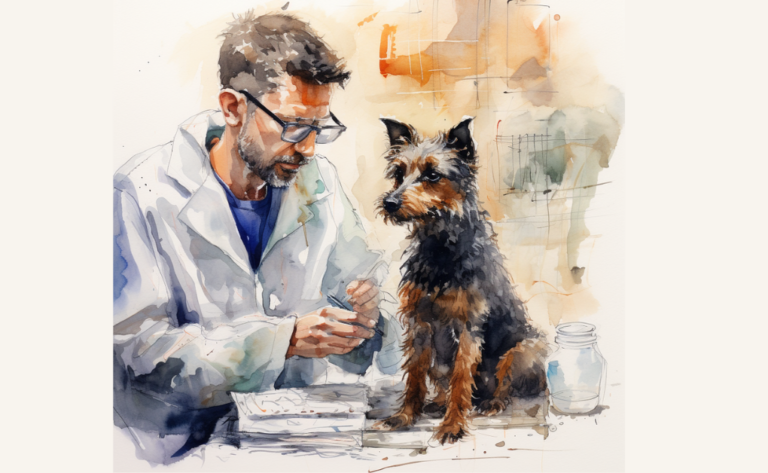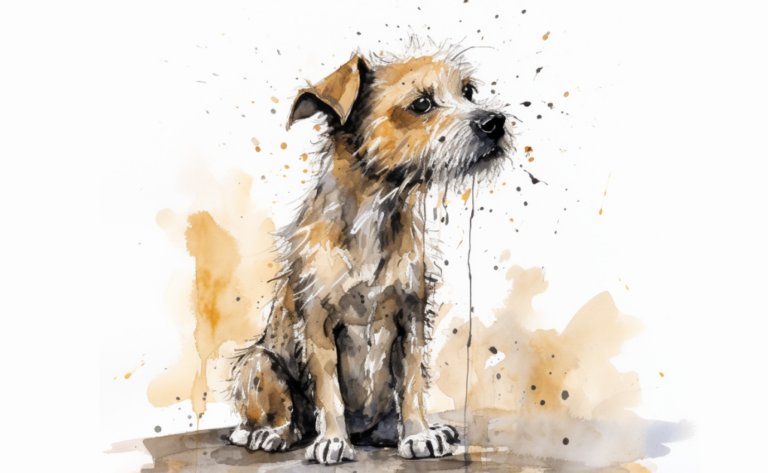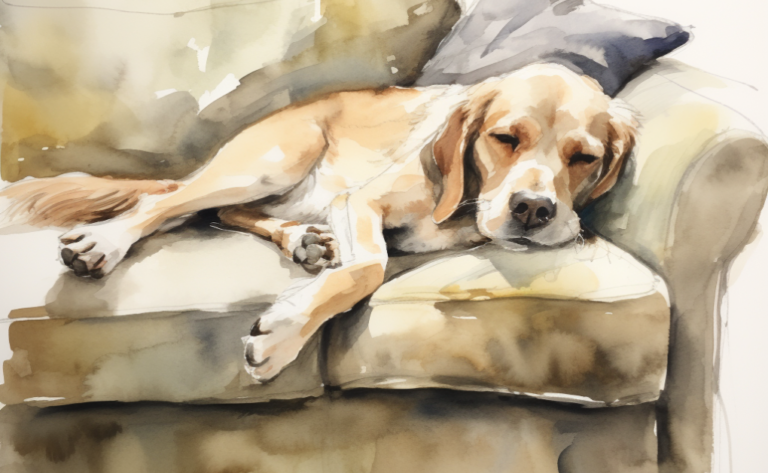What is Soft Tissue Trauma in Cats?
What is it?
How is it Treated?
Breed Predispositions
Munchkins and Scottish Folds
Introduction
Marie always took pride in providing a safe environment for her beloved cat, Whiskers. However, one day she noticed him limping and visibly in pain after returning from one of his outdoor adventures. Fearing the worst, she rushed Whiskers to the veterinarian, who diagnosed him with soft tissue trauma. Suddenly, Marie realized that even the most cautious pet owner cannot always prevent accidents from happening.
Soft tissue trauma in cats refers to injuries that affect the body’s soft tissues, including muscles, tendons, ligaments, and skin. It occurs due to certain mechanisms that result in damage to these tissues. Soft tissue trauma can range from mild to severe, depending on the extent of the injury. It can happen due to accidents, falls, bites, or other forms of trauma. Soft tissue trauma may cause pain, swelling, and discomfort for the cat.
Recognizing soft tissue trauma is important to seek appropriate veterinary care promptly. Managing soft tissue trauma involves addressing the underlying damage, supporting and protecting the injured area, and promoting healing. The extent and severity of the trauma will determine the necessary course of action for the cat’s recovery and overall well-being.
Causes of Soft Tissue Trauma in Cats
Soft tissue trauma in cats refers to injuries that affect the skin, muscles, ligaments, and tendons, but not the bones. Various factors, such as falls, fights, car accidents, or rough play, can cause these.
Bite Wounds and Scratches
One common cause of soft tissue trauma in cats is bite wounds and scratches, often resulting from fights with other animals. Cats’ teeth and claws are sharp and can cause significant damage to the skin and underlying tissues. Moreover, these injuries are often infected with bacteria from the attacking animal’s mouth or claws, which can lead to abscesses if not treated promptly.
Falls and Accidents
Cats are agile creatures but can still get injured from falls, particularly in high places (“high-rise syndrome” in urban areas). Although they often land on their feet, the impact can cause soft tissue damage, such as muscle strain, sprain, or bruising. Other types of accidents, like getting hit by a car, can also cause significant soft tissue trauma.

Burns and Scalds
Burns and scalds can cause serious soft tissue trauma in cats. These could be thermal burns caused by contact with hot objects or liquids, chemical burns caused by exposure to harmful substances, or radiation burns caused by excessive sun exposure (particularly in white or light-colored cats).
Lacerations and Abrasions
Lacerations (cuts) and abrasions (scrapes) can result from contact with sharp objects or rough surfaces. These injuries can vary in severity, from minor surface wounds to deep cuts affecting muscles and other soft tissues.
Foreign Body Injuries
Cats are naturally curious and may come into contact with various foreign objects that can cause soft tissue trauma. This could include sharp objects like glass or thorns that cut the skin or smaller foreign bodies like grass seeds that can work their way into the skin and cause inflammation and infection.
Strains and Sprains
Overextension or twisting of the joints can lead to strains (injuries to muscles or tendons) and sprains (injuries to ligaments). These injuries can occur during vigorous play, falls, or sudden movements.
In all cases of soft tissue trauma, prompt veterinary attention is crucial to assess the extent of the injury, provide appropriate treatment, and prevent complications like infection or prolonged discomfort.
Symptoms of Soft Tissue Trauma in Cats
Symptoms of soft tissue trauma in cats can vary depending on the nature and extent of the injury, but common signs to watch for include:
- Limping or difficulty moving
- Unusual postures or positions
- Swelling or bruising
- Visible wounds such as cuts, abrasions, or punctures
- Bleeding or discharge from a wound
- Pain when the affected area is touched
- Reluctance to be touched or picked up
- Overgrooming or excessive licking of a particular area
- Changes in behavior, such as increased aggression or fearfulness
- Reduced appetite or reluctance to eat
- Hiding or avoidance behavior
- Unusual quietness or lethargy
If you notice any of these signs, it’s important to seek veterinary attention promptly. While some soft tissue injuries may be minor, others can be serious and require immediate treatment.
Diagnosis of Soft Tissue Trauma in Cats
In diagnosing soft tissue trauma, the vet’s goal is to understand the nature and extent of the injury. This will allow them to develop an appropriate treatment plan and provide the best possible care for the cat. Diagnostic tests include:
Physical Examination
A thorough physical examination is the first step in diagnosing soft tissue trauma in cats. The veterinarian will visually inspect the cat’s body for signs of injury, such as cuts, bruises, or swelling. They will also palpate or gently feel the cat’s body to identify any areas of pain, swelling, or abnormal movement. The physical exam can provide important clues about the location and extent of the injury.
Radiography (X-Rays)
While radiographs are typically used to diagnose bone fractures, they can also be useful in assessing soft tissue trauma. For instance, an X-ray can reveal swelling, changes in the shape or position of soft tissues, or the presence of foreign bodies. Radiography can also rule out any concurrent bone fractures causing similar symptoms.
Ultrasound
Ultrasound uses sound waves to create images of the body’s internal structures. It can be especially helpful in diagnosing soft tissue injuries because it allows the vet to visualize the muscles, tendons, and ligaments in real time. Ultrasound can show abnormalities like swelling, tears, or inflammation.
Fine Needle Aspiration and Cytology
The vet may perform a fine needle aspiration if the cat is swelling or has a mass. This involves using a thin needle to collect a small sample of cells from the area. The cells are then examined under a microscope (a process called cytology) to identify the cause of the swelling. This can help distinguish between an abscess (a pocket of pus), a hematoma (a collection of blood), a seroma (a pocket of serous fluid), or a tumor.
Magnetic Resonance Imaging (MRI) or Computed Tomography (CT) Scan
More advanced imaging techniques like MRI or CT scans may be used for complex or severe cases. These imaging modalities can provide detailed, three-dimensional images of the soft tissues, which can help identify injuries that might be missed with X-rays or ultrasounds. However, these tests are more expensive and require the cat to be under general anesthesia.
How to Treat a Cat with Soft Tissue Injury?
Wound Management
The first step is often wound management if a cat has visible wounds like cuts or abrasions. This involves cleaning the wound to remove dirt or debris and applying a topical antiseptic to prevent infection.

Sometimes, the wound may need to be sutured or stapled closed. If the wound is already infected, the vet may need to drain the infection and prescribe antibiotics.
Pain Management
Pain management is a crucial aspect of treating soft tissue trauma. Depending on the severity of the injury, this could involve a combination of different analgesics (painkillers), from non-steroidal anti-inflammatory drugs (NSAIDs) to more potent medications like opioids. The aim is to keep the cat as comfortable as possible while they heal.
Physical Therapy and Rehabilitation
Physical therapy and rehabilitation can play a key role in the cat’s recovery from certain types of soft tissue trauma, such as strains or sprains. This could involve gentle exercises to improve the cat’s range of motion, strengthen its muscles, and promote healing. The specific exercises would depend on the nature of the injury and would be tailored to the individual cat’s needs.
Surgical Intervention
In severe or complex cases, surgical intervention may be necessary to repair the damaged tissues. This could involve repairing torn muscles or ligaments, removing foreign bodies, or draining abscesses. The exact procedure would depend on the nature and location of the injury.
Antibiotics or Antifungal Treatment
If the soft tissue trauma is due to an infection, such as an abscess or a bite wound, the cat will likely need antibiotics to combat the bacteria. In the case of a fungal infection, antifungal medications are prescribed. The specific medication, dose, and duration of treatment would depend on the type of infection and the cat’s overall health.
Management of Underlying Causes
Treating soft tissue trauma sometimes involves managing underlying causes or contributing factors. For example, if the trauma is due to a burn, the vet would also need to address the burn wound and possibly make recommendations for preventing future burns.
Regardless of the specific treatments used, the goal of managing soft tissue trauma is to alleviate pain, promote healing, prevent complications, and restore the cat’s normal function as much as possible. Regular follow-ups with the vet will also be necessary to monitor the cat’s progress and adjust the treatment plan.
Recovery After Treatment
The recovery process after treatment of soft tissue trauma in cats can vary greatly, depending on the severity and type of the injury, the overall health of the cat, and the specific treatment provided. However, some general aspects of recovery typically include the following:
- Rest and Restricted Activity: Just as humans recover from an injury, rest is often crucial for cats healing from soft tissue trauma. This might involve limiting their activities, avoiding high jumps, and providing a quiet, comfortable space where they can rest undisturbed.
- Medication Administration: If the vet has prescribed any medications, such as antibiotics or pain relievers, it’s essential to administer these as directed. Always complete the full course of antibiotics, even if the cat seems to have recovered, to prevent the development of antibiotic-resistant infections.
- Wound Care: If the cat has a wound, the owner may need to perform regular wound care at home. This could involve cleaning the wound, applying topical medications, or changing bandages. The vet will provide specific instructions based on the nature of the wound.
- Follow-up Veterinary Visits: These are typically necessary to monitor the cat’s recovery, assess the healing process, and make any necessary adjustments to the treatment plan. This could involve additional imaging, like X-rays or ultrasounds, to confirm that the tissues are healing correctly.
- Nutritional Support: A balanced diet can support healing by providing the necessary nutrients for tissue repair. The vet might recommend a specific diet or supplements, particularly if the cat has lost weight or if the injury has affected its appetite.
- Physical Therapy or Rehabilitation: In some cases, the cat may benefit from continued physical therapy or rehabilitation exercises at home to regain strength, flexibility, and coordination. The vet or a veterinary physical therapist can guide you on this.
- Behavior Monitoring: The cat owner should monitor the cat’s behavior closely during recovery. Any changes, such as loss of appetite, lethargy, aggression, changes in elimination habits, or signs of pain, should be reported to the vet.
Each cat’s recovery process will be unique, and some cats may require more time and support to heal fully from a soft tissue trauma. Throughout the recovery process, it’s crucial to stay in close communication with the vet and to follow their guidance to ensure the best outcome for the cat.
Frequently Asked Questions
Disclaimer: The information provided on this veterinary website is intended for general educational purposes only and should not be considered as a substitute for professional veterinary advice, diagnosis, or treatment. Always consult a licensed veterinarian for any concerns or questions regarding the health and well-being of your pet. This website does not claim to cover every possible situation or provide exhaustive knowledge on the subjects presented. The owners and contributors of this website are not responsible for any harm or loss that may result from the use or misuse of the information provided herein.







